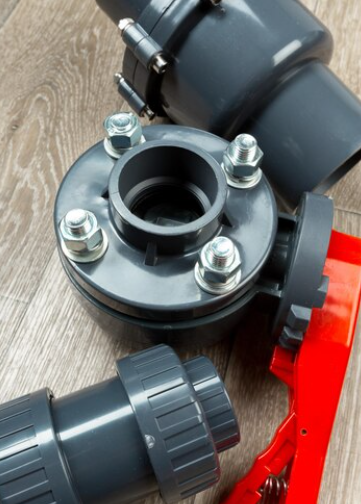Fireproofing Pump:A Comprehensive Guide.

PUMP FOR FIREPROOFING.
Various regulations and codes recommend that the corporation or licensor implement fireproofing in process terminals, power plants, petrochemical facilities, refineries, and other sites where there is a significant risk of fire.
Structures and equipment are fireproofed to a certain height or the entire unit in accordance with the necessary rules for this purpose. A smaller fireproofing pump is the ideal choice because there may be hard-to-reach spots that need repairing in places that need fireproofing.
An air compressor positioned on top of the system allows the fireproofing material to be sprayed out of the gun using a ready-to-use fireproofing pump.
Understanding the fundamentals of fireproofing and the associated pump is crucial before making a purchase.
What is involved in fireproofing?
By providing a variety of fire-resistant materials, tools, and building constructions, fireproofing enables vital structures to stay operational during an unintentional fire and to be maintained until it is put out. Applying materials to those units that reduce the likelihood of a fire spreading allows operators to take preventative measures.
Categories
Most industrial buildings need to be fireproof in order to obtain insurance. As a result, the procedure is divided into two categories: passive and active. Applying the fireproofing system by active fireproofing necessitates human interaction. Certain fireproof materials, such as cementitious, intumescent, and firestop, are used in the design and planning of passive fireproofing.
Cement-based
Cementitious fireproofing is a plaster-like coating made of gypsum that, when dry, resembles white stucco. During a fire, this sort of coating is sprayed on structural surfaces to keep the temperature below 540C, which is the point at which steel bends.
Igniting
When heated, flammescent paints expand to form a barrier that is resistant to heat. Sodium silicate, an ingredient in this coating, aids in the material’s thickening, air absorption, and creation of an enhanced insulating layer. On valves, tanks, and pipelines, intumescent fireproofing coatings are applied.
Put out the fire
All wall and floor joints and apertures are sealed with fire-resistant certified material using firestop fireproofing. Fire dampers are used to plug ducting openings, pipe hole cuts, and electrical wiring trays.
Materials
The only requirements stated in U.S. regulations and rules for fireproofing materials are that they be long-lasting and resistant to corrosion. Nonetheless.
The Following Fireproofing Compounds Are Commonly Used In Industry Practice For Various Purposes:
Carboline 139 Carboguard 890 or 1340 Carbomastic 801
Plasters made of cement
Concrete Fibrous Plasters with Mineral Wood Fibres or Ceramic Fibres
plasters made of gypsum
igniting coatings
Mesh Pyrocrete 241 Techniques for Thinners
The following are the most widely accepted application techniques for fireproofing equipment that has a pump:
Surface preparation of equipment.
application of primer ranging from 65 to 75 microns.
To keep the tie mesh intact, tack weld the nut.
Utilise Pyrocrete 241.
Verify the thickness of the paint and fireproofing compound after applying two coats of epoxy paint.
verified twice before being approved by the chief engineer.
When using structural components, a small fireproofing pump is used for difficult-to-reach places or larger units to apply fireproofing across a wider area.
Buying Guide for Fireproofing Pumps
There are numerous pump options available whether you’re improving your existing fireproofing pump, buying a fireproofing pump for the first time, or adding more equipment to your inventory. Consequently, it’s crucial to take into account the following information from our fireproofing pump purchasing guide:
Choose the Appropriate Size for the Task
Since there isn’t a one-size-fits-all method for fireproofing pumps, it is essential to know the scale of the job and to discuss it with the pump manufacturer before making a purchase. The variety of fireproofing pumps includes enormous, high-pressure machines that can spray an entire warehouse as well as small, handheld models.An oversized pump is a financial waste that reduces your return on investment and earnings, while a pump that is too small for your needs will result in low production and poor efficiency. Additionally, having the appropriate pump sizing guarantees that you have the ideal accessories for the task.
Determine the Appropriate Power Needs
Power requirements are a crucial factor to take into account when estimating both initial and ongoing costs for various pumps. The size of the area required for fireproofing determines the specific power needs. For example, a tall, multi storey skyscraper will need a lot more energy than a smaller pump unit for the patchwork of a beam. For increased efficiency in the latter scenario, some purchasers would rent a generator to transport supplies and machinery closer to the application site.
Make Sure Your Fireproofing Materials Match
Certain high-density materials, due to their thickness and consistency, may require higher powerful pumps depending on the requirements of your site. Most pumps are compatible with low- and medium-density materials without any issues. Therefore, when talking about various pumps with your store, it’s important to take into account the materials you use now and could need in the future. Make sure the pump can supply the materials you need for the work consistently and dependably.
Recognize Height and Distance Requirements
The most important things to address with a sales representative before buying a pump are the job’s height and distance requirements. Making the best purchase choice will depend on a number of factors, including pump technology, convenience of operation, matching bid specifications, and the amount and height at which fireproofing materials must be pumped.
More powerful pumps are typically recommended by salespeople since they pay for themselves in terms of productivity. For example, regularly having to reset and reposition the equipment due to insufficient power at the necessary height and distance is a waste of time, money, and resources that may be prevented with appropriate pump selection.
In addition to being necessary for insurance purposes, fireproofing ensures the safety of your staff and the uninterrupted running of your business while the fire is put out. When looking into the best pump for your needs, there are a lot of factors to take into account, but if you follow this fireproofing pump buying guide, you’ll be able to make the right choice more quickly!
The following are some findings on fire pumps:
- In most fire safety systems, fire pumps are a necessary component.
- Pressure relief valves and pumps for fire pumps serve as the foundation of any fire safety system.
- Making sure your facility is prepared to handle a fire breakout requires selecting the right kind of fire pump.
- The demands of the fire suppression system must be compared with the available water supply to ascertain whether a fire pump is necessary.
- Not enough pressure or flow can be produced by improperly sized or chosen pumps, which can lead to a number of issues.
- Unwanted air bubbles enter the system when the suction pressure is too low, causing cavitation in the pump and the pump’s supply pipe.


